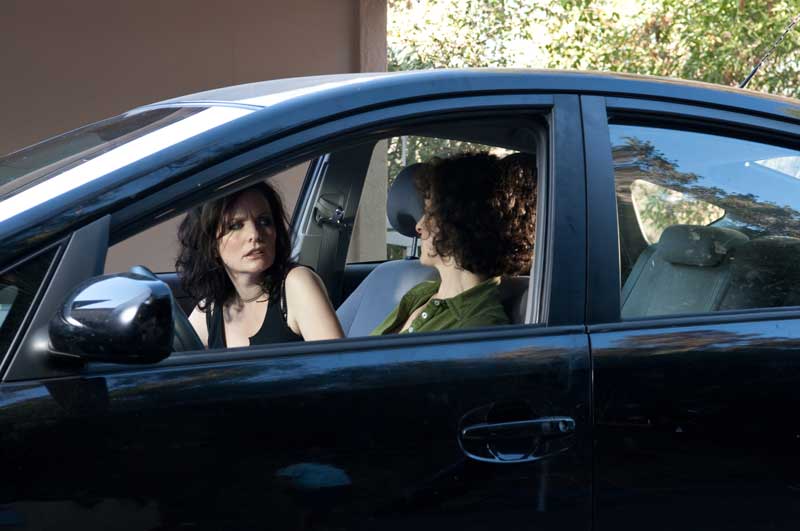|
The Paliament Film Collective's (Partial) Canon of Lesbian Cinema |
||||
 |
||||
Iris and Lily (Guinevere Turner and Lisa Gornick). Still from The Owls (dir. Cheryl Dunye, 2010). Used with permission from the Parliament Film Collective. |
||||
A Lesbian Collective Aesthetic:
Making and Teaching The Owls
Page 6 of 6
And (at long last) this is where teaching comes in. In the classroom, on these pages, in film festivals where there are question-and-answer sessions, and in radical collectives, we can provide viewers versed in traditional (lesbian) cinema a different education, one akin to that which we created by working collectively across generation, nation, sexuality, gender, and self-identification. The critical first step is to become familiar with a great history of innovative queer/feminist cinema, and next to refine one’s own language to best describe the hard, beautiful, new things one sees there as well as what still might be missing. Thus, a first step is that project of naming and unnaming discussed and used across the film: what do you see (or not see), how is it different from what you have seen before, and in what ways are radical issues and their related forms necessary to express lesbian content? Our difficult conversations about how to understand black and trans lesbian history, visibility, and identity are raised, maintained, and left open in the film so as to be productively addressed in the film’s teaching, and not just as political questions, but as a formal ones as well.
While The Owls represents lesbian questions from a lesbian point of view, it also asks cinema questions from a cineaste’s point of view, and production questions from a collective’s point of view. Conversation about lesbian film can always circulate around what the work expresses about (lesbian) film. How does this film comment on queer film style and history? For instance, a documentary/fiction hybrid is often used to make claims about truth and fiction in cinema, and in the case of a lesbian film, around the identities, communities, politics, and representations held there. How does this film understand lesbian identity and community? Then, the beauty of digital tools (seen in the film’s visual language) is that they allow every niche group two related possibilities: to name, refine, and define our own aesthetic (as already discussed above) and to share that new vision within our community and beyond. However, these new tools provide another advantage in the classroom. These newly available video tools can allow your students (or yourself) to learn about the cinema one might need by seeing more examples of it and, even better, making it for oneself. The videos included in this article were shot with a hundred-dollar Flip camera that has one button that needs to be pressed once to shoot and once again to finish the shot. The low-budget, low-tech, low-end videos here share the lesbian collective aesthetic of our more finely rendered feature film, The Owls, because they are rooted in the same commitment to self-expression through communal interaction, open-ended conversation, and using new forms, dependable theories, and radical politics. Anyone can make such a film to comment on and contribute to lesbian cinema, and everyone should! In this way, students and teachers who view such films, discuss them, and perhaps even add their own images to the conversation build on an aesthetic where collective process first makes a story and then is the story. What is your (class’s) lesbian collective story?
Cheryl Dunye and Alex Juhasz at the Berlinale, part 1 [4:45]
The Parliament Film Collective's (Partial) Canon of Lesbian Cinema
Copyright © 2014. All rights reserved.